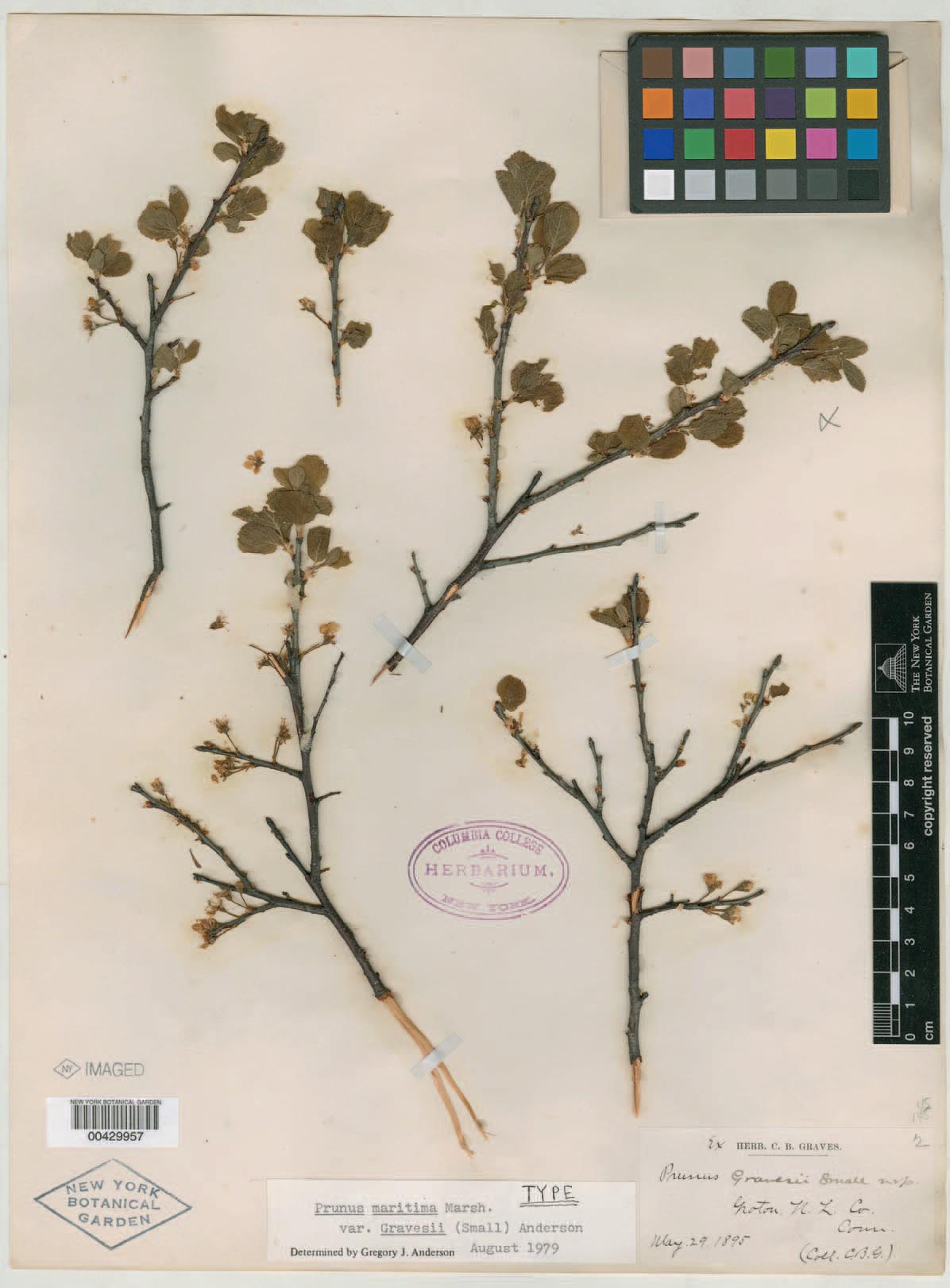 The taxonomic status of a putative endemic taxon of Prunus, of which individuals are kept in the UCONN rainforest (i.e., greenhouse) was investigated. The specimens are also deposited in the CONN herbarium.
The taxonomic status of a putative endemic taxon of Prunus, of which individuals are kept in the UCONN rainforest (i.e., greenhouse) was investigated. The specimens are also deposited in the CONN herbarium.
Klooster M.R., B.A. Connolly, E.M. Benedict, L.C. Gruisha & G.J. Anderson. 2018. Resolving the taxonomic identity of Prunus maritime var. gravesii (Rosaceae) through genotyping analyses using micro satellite loci. Rhodora 120: 187–201. pdf
Abstract reads: Graves’ Beach Plum (Prunus maritima var. gravesii) has been notable for its unique morphological form since a single individual was first discovered on Esker Point in Groton, Connecticut and formally described in 1897. This original clone is now extinct in the wild and is presently kept in cultivation on the University of Connecticut campus, with no additional wild plants discovered in 120 years. It was distinguished morphologically based primarily on its distinctive orbicular leaves, which differ from the ovate leaves found in P. maritima var. maritima. Prior studies have shown few morphological differences between P. maritima var. gravesii and P. maritima var. maritima and full reproductive compatibility has been experimentally observed between the two taxa. However, the few unique characteristics of P. maritima var. gravesii merit further investigation to determine if it has unique molecular differences relative to var. maritima that might lead to the prioritization of conservation and possible reintroduction efforts. Twelve polymorphic microsatellite markers were used to evaluate the genetic composition of 40 P. maritima var. maritima plants from three regional populations (Milford, Connecticut, Waterford, Connecticut, and Weekapaug, Rhode Island) and one additional individual from the type locality of P. maritima var. gravesii. High levels of allelic diversity and heterozygosity were observed among the forty-one samples. Additionally, low levels of genetic differentiation were observed among populations sampled, suggesting regular gene flow occurs among populations. Of the 12 loci studied, P. maritima var. gravesii possessed only one private allele existing in the heterozygotic condition, sharing all other alleles across loci with the P. maritima var. maritima samples. Further evaluations of genetic structure, including principal coordinates analysis and population assignment analysis, revealed the genotypic identity of P. maritima var. gravesii placed it within populations of P. maritima var. maritima and not as a discrete taxon. Therefore, we propose that the current variety classification be changed, and P. maritima var. gravesii should now be considered a naturally occurring but exceptionally rare morphological variant of the widespread P. maritima var. maritima, as P. maritima forma graves.